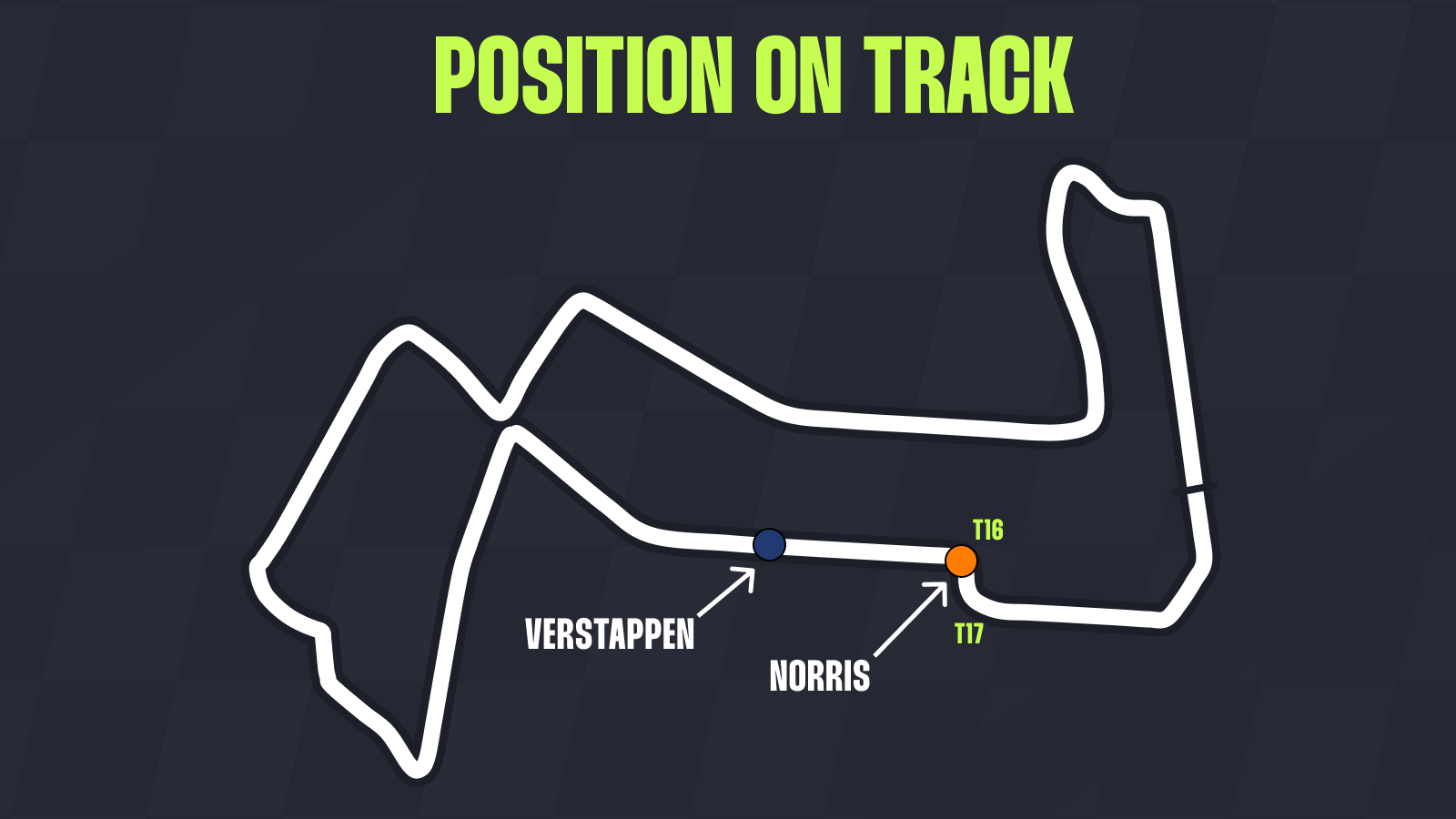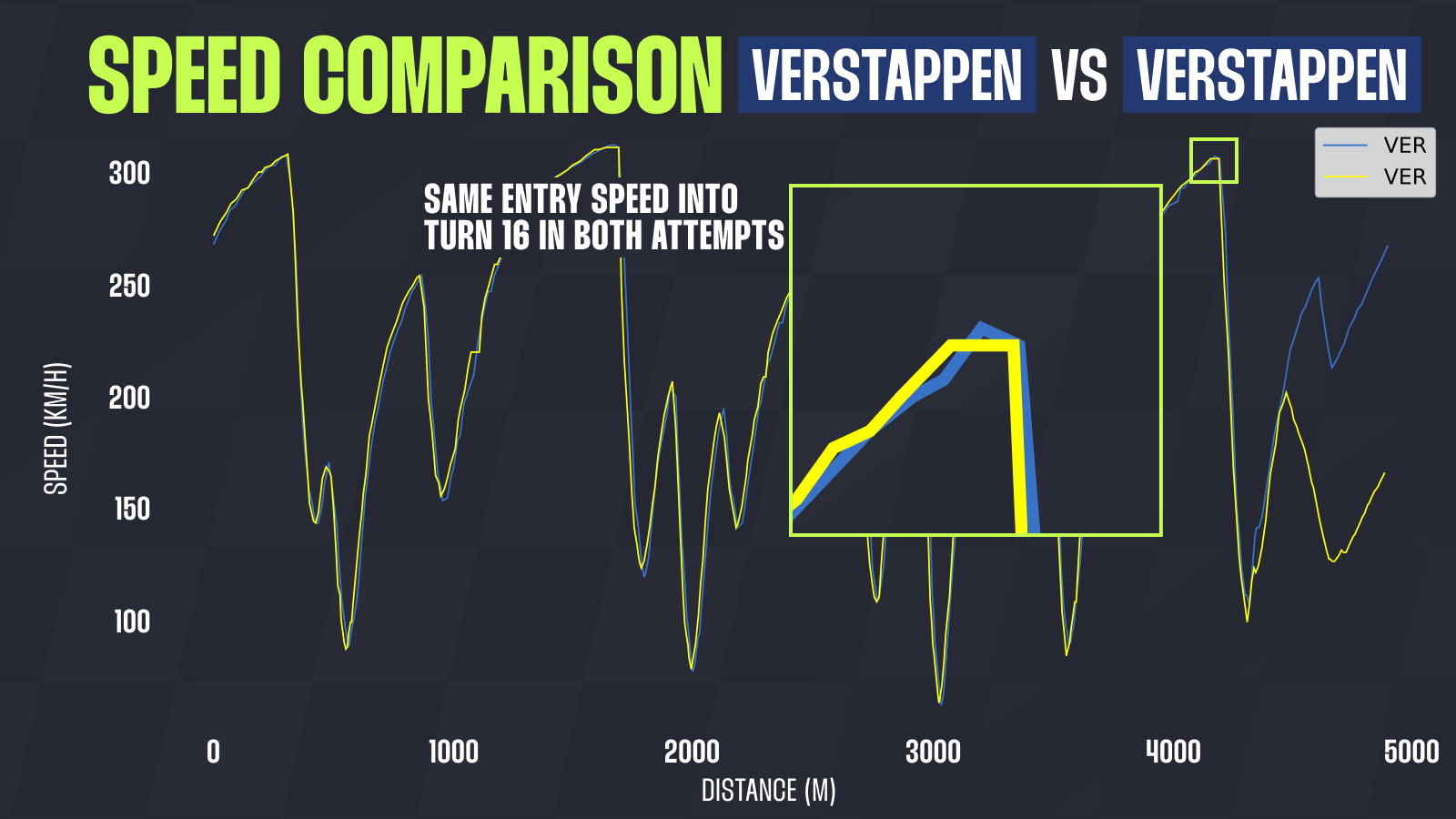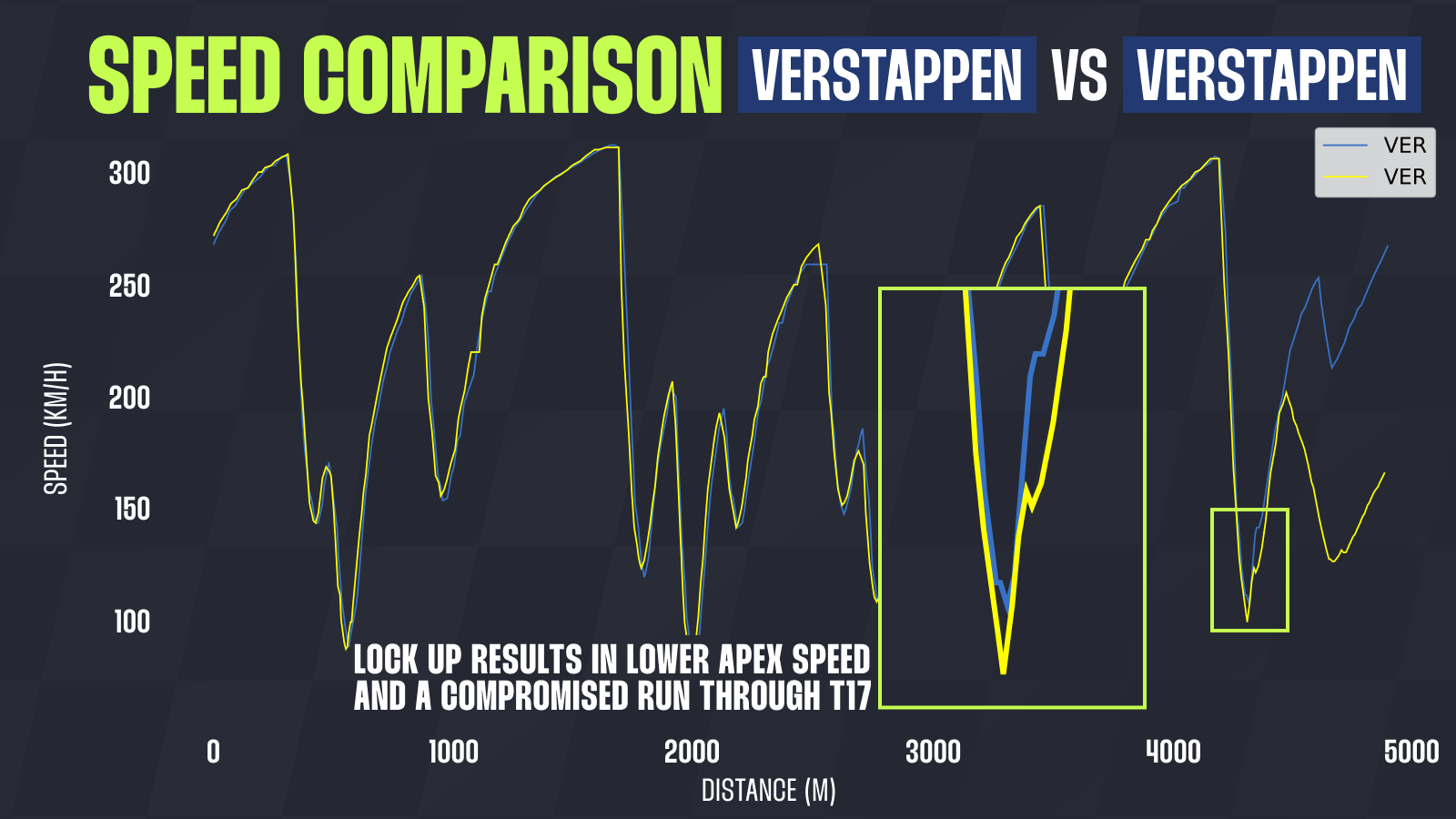New Max Verstappen evidence emerges after Lando Norris Singapore GP accusation

Max Verstappen felt dirty air from Lando Norris hindered his final qualifying lap.
Max Verstappen missed out on what could have been his third consecutive pole position, falling short by just 0.182 seconds to George Russell in Mercedes.
However, the “incident” between him and Norris in the final corners of his second flying lap in Q3, according to Max and his team, significantly affected his lap time, forcing him to abandon the attempt altogether. So, did Norris really influence his lap? The telemetry data gives us the answer.
Did Lando Norris hinder Max Verstappen? Telemetry explains
If there’s one place where you want a perfect qualifying, it’s Singapore. The narrow and slow street circuit, surrounded closely by walls, offers very little — almost no — room for overtaking during the race. Add to that the fact that, from a strategic point of view, teams have minimal flexibility since a one-stop strategy is almost always the fastest, and you understand why Saturday is the most important day of the weekend.
If you want to win in Singapore, you simply have to qualify well.
That’s exactly what Max Verstappen was aiming for, appearing to be the only real threat to George Russell, who was outstanding in Q3 — right up until the final sector of the lap.
The reigning champion was one of the last drivers on his second flying lap in Q3. By that point, it was already clear that neither McLaren driver would start from the front row and that the battle for pole was between Verstappen and Russell.
We could also see that Max had improved his personal best in both the first and middle sectors, meaning the final corners would decide the outcome.
Looking ahead to the Singapore Grand Prix
👉 Singapore GP: George Russell sets pole position as angry Max Verstappen takes aim at Norris
👉 F1 starting grid: What is the grid order for the 2025 Singapore Grand Prix?
However, Max made an error in Turn 16 and soon after abandoned his lap, which officially left Russell in P1 and the Red Bull driver in P2.
But what exactly happened?
From the onboard footage — as well as what we saw on the live broadcast — Verstappen made a small but costly mistake at T16, slightly locking his front-left tyre under braking.
That compromised his line through T17, costing him valuable exit speed. Realising that the mistake had ruined his lap, Max abandoned it, caught up to Norris, who was entering the pits, and ironically gave him a thumbs-up gesture.
His race engineer also seemed to believe that Norris played a role, telling Max over the radio almost immediately after the error that he could thank his mate for that.
Let’s take a look at what the telemetry says.

According to the telemetry data, when comparing Max’s first and second flying laps in Q3, his entry speed into T16 was nearly identical.
The difference lies in the fact that on his second attempt, Max braked and lifted off the throttle significantly later. After the lock-up, his speed through and out of T17 was notably lower — something clearly visible also during the live broadcast.
In the images below, you can see the difference in speed between Max’s first flying lap in Q3 (blue line) and his second attempt (yellow line).


Although there was no close on-track encounter between the two drivers, Max claimed that the dirty air generated by Lando affected the car’s balance under braking, causing his mistake. Unfortunately, this claim cannot be definitively proven or disproven by the data.
It is undoubtedly true that dirty air was present, and that it influences downforce distribution — something crucially important under braking, where the front axle carries the greatest load. The question that remains is: to what extent did it really affect the car’s balance?
We also shouldn’t forget that the telemetry shows Max lifting off later and braking later, likely in an attempt to go faster through that part of the circuit and steal pole position.
It’s fair to say that this made a clean run through T16–T17 more difficult, but it doesn’t provide enough evidence to attribute the lock-up solely to that aspect. Mistakes by Verstappen in qualifying are, as we know, exceptionally rare.
Up to the entry of T16, Max was actually 0.14 seconds ahead of his previous lap — the one that was 0.182 seconds slower than Russell’s pole lap. This means that even at that point, he was still running second, but with margins small enough that the pole was still within reach.
On the other hand, what is certain is that Norris was far enough ahead to avoid any risk of a penalty. From his comments after qualifying, it’s clear there was no intention to deliberately affect the lap of the driver behind.
What matters most for him, though, is that once again he didn’t perform strongly enough in qualifying. Starting from P5, he can’t expect too much, and more importantly, his team-mate and main championship rival will start from P3 — giving him an excellent chance to extend his lead after the weekend.
Read next: ‘Always complain’ – Lando Norris takes aim at Red Bull after Verstappen criticism





